- Opinion
- 07 Feb 20

The underfunding of the arts in Ireland has reached breaking point. At a pre-election hustings in the Project Arts Centre, the frustration was palpable as the arts sector articulated its anger to the main political parties in no uncertain terms.
With Irish investment in the arts currently standing well below the European average, and the majority of artists earning less than the national minimum wage, the future of the sector has never looked so uncertain. Indeed, in recent years we have seen some of Dublin’s most celebrated creatives, including Damien Dempsey, David Kitt and Wallis Bird, joining the mass exodus to Berlin. It raises the question: how will the emerging generation of Irish artists fare? And might it be turned into a general election issue?
These questions were at the core of the audience’s concerns at the Projects Arts Centre in Dublin on January 31, as the National Campaign For The Arts (NCFA) called on representatives of the major political parties to present their commitments to arts funding at a pre-election public hustings.
All of the main parties were represented, with the Minister for the Arts Josepha Madigan (Fine Gael), Niamh Smyth (Fianna Fáil), Fintan Warfield (Sinn Féin), Rebecca Moynihan (Labour), Claire Byrne (Greens), Richard Boyd Barrett (People Before Profit) and Sarah Durcan (Social Democrats) all lined up to attend. The event offered candidates the opportunity to directly address artists and their issues – and to outline their party’s response to the NCFA’s ongoing campaign, which calls on the next government to commit to doubling funding for the arts by 2025.
“Our manifesto is that the arts in Ireland are a national resource,” Angela Dorgan, the chair of the campaign, remarked in her introduction to the proceedings. “They’re a necessity, not a luxury. The arts are an asset, not an overhead. 72% of artists working in Ireland earn less than the national minimum wage. 72% of artists and those working in the arts do not have a pension. 48% of them do not have health insurance.
“The other stark, worrying and really unacceptable figure is that the Irish government’s investment in the arts and culture is far lower than in any other country in Europe,” she continued, “representing just 0.11% percent of GDP, compared to the European average, which is 0.6%.”
Advertisement
Maria Fleming, currently on sick leave from her job as general manager of the Dublin Theatre Festival, and one of the 48% of people working in the arts who are without health insurance, was in attendance. “I’ve been working in the arts for over 25 years,” she said, “and I can safely say that I’ve never seen it so precarious. To borrow a phrase from Greta Thunberg,‘Our house is on fire’. We need you to do something about it.”
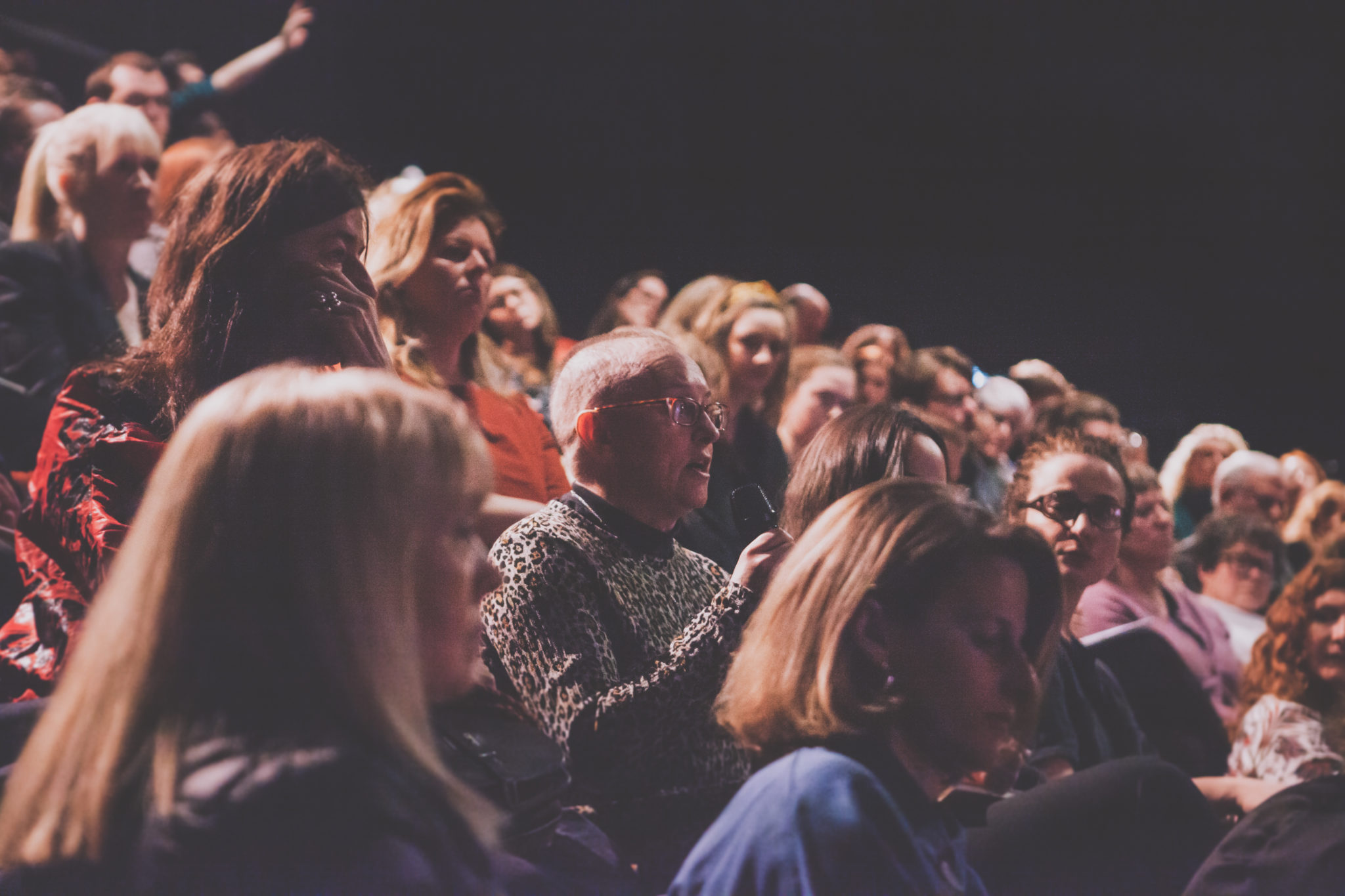 The NCFA (National Campaign for the Arts) invited Election Candidates 01/31/20
The NCFA (National Campaign for the Arts) invited Election Candidates 01/31/20It’s not all bad news. More people attend paid arts events in Ireland every year than go to all of the GAA championship events combined. Cultural tourism, including both domestic and overseas tourism, is worth over €5.1 billion to the economy. And, for every €1 invested in the arts and culture, almost €2 is returned to the government in direct taxation.
In front of a full house, as well as an online audience watching via livestream, each speaker was given five minutes to outline their arts policy, and to propose their answer to the crucial question posed by moderator Hugh Linehan: “How are we going to support artists in a way which is commensurate with the value they bring to society?”
Funding The Arts
Minister for Culture, Heritage and the Gaeltacht Josepha Madigan was the first speaker. Describing herself as “the biggest supporter” of the arts, she ran through Fine Gael’s achievements in the sphere, before committing to doubling the funding for culture by 2025 – including increasing Arts Council funding from €67.5 million in 2017 to €134 million in 2025.
Advertisement
That was not a commitment dreamt up on the spot. The Minister made it clear that she had already secured the commitment to doubling funding for her department by 2025. “This government decision,” she said, “means that any future government, whether it’s led by Fine Gael or Fianna Fáil, will have to base their decisions for culture funding on this significant commitment. I know it will have ramifications for successive governments, whoever they may be.”
Fianna Fáil, it turned out, were the only party not making any specific long-term commitment to funding the arts. Wexford candidate Malcolm Byrne, stepping in at the last minute for Niamh Smyth, explained that Fianna Fáil were “not going to get into the auction politics.” They would not be doubling arts funding.
“When Leo Varadkar, running for the Fine Gael leadership, said he’d commit to doubling the funding for the arts, there was no timeframe given – and the goalposts keep moving,” he said. “What we’re saying is, ‘Yes – we will be supporting a sustainable arts sector’. We are committing to ensure that we recognise artistic opportunity, rather than continuing the government policy of treating the arts as a photo opportunity.”
Sinn Féin Senator and musician Fintan Warfield stressed the importance of bringing Ireland’s arts funding in line with the European average.
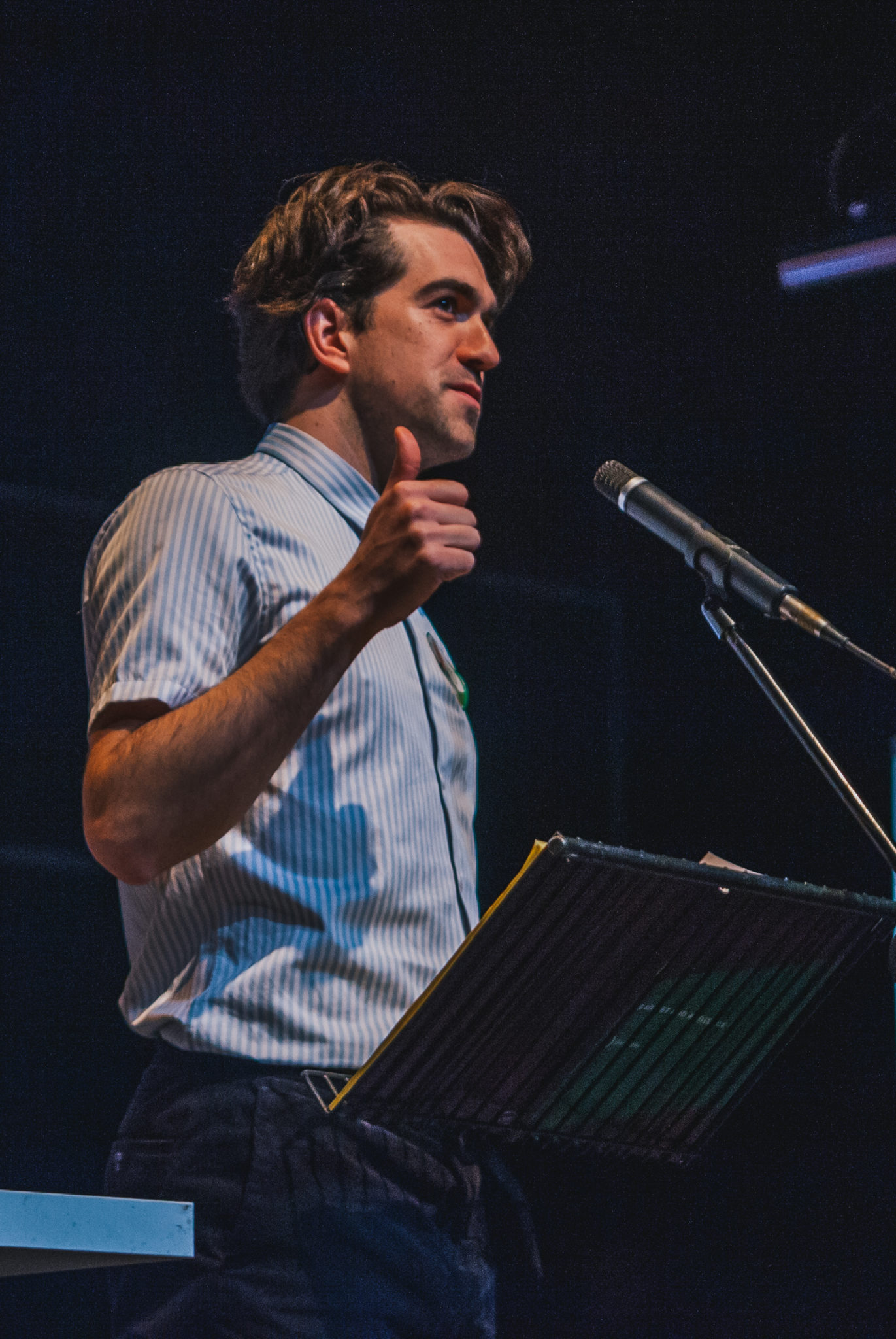 The NCFA (National Campaign for the Arts) invited Election Candidates 01/31/20
The NCFA (National Campaign for the Arts) invited Election Candidates 01/31/20“What Sinn Fein have committed to, in this election, is to invest €137.5 million above what we invest now,” he noted. “General government spending, as a percentage of GDP, is 26%. We’re lower than the United States, Germany, Denmark, the Netherlands and France. People who present plans to bring us to the EU average need to present plans to increase our tax base. Sinn Féin are the only party that will do this, while giving workers and families a break – ending the corporation tax holiday for banks, taxing intangible assets onshore by multinationals and introducing a 5% income levy on individuals who earn above €140,000.”
Advertisement
The Labour Party’s Rebecca Moynihan also committed to doubling arts funding by 2025, and raising it by 20% in the first year alone. Among her proposals was a hotel bed tax.
“You’re talking about 1% – which will have a yield of about €15 million,” she explained. “That also has the benefit of giving a yield to regional arts scenes around the country, such as Kilkenny and Kerry. That’s important in terms of having a sustainable funding and income stream coming in for the arts.”
Claire Byrne for the Green Party spoke about the “huge reduction of funding over the last decade.” She committed to making sure that we not only restore that funding, but go beyond it.
“In line with the NCFA’s calls, we want to bring the Arts Council funding back to 2008 levels of €82 million,” she argued, “with the view to double that investment over the next five years, to bring us up to the EU average.”
Richard Boyd Barrett of Solidarity-People Before Profit, who has also supported doubling the funding, was openly critical of the Fine Gael government’s record on the arts.
“I challenge people to look at the 2020 public expenditure estimates for the government on current arts expenditure,” he said. “You will see, over the next three years there is no increase on the ceilings proposed for arts expenditure. This year, despite that commitment, there is a pathetic 1% increase. So don’t believe promises and pretence in advance of an election. Let’s see the colour of the money.
“We spend 28% of GDP on public expenditure,” he continued. “The average in Europe is 41%. That’s why the arts are underfunded, that’s why we don’t have public housing, that’s why our public health system is in bits. That’s why we have some of the most expensive and some of the worst public transport in Europe, that’s why childcare is more expensive than anywhere else in Europe, and that’s why we have the most overcrowded classrooms. If you actually want to see the kind of manifestos that are being articulated here followed through on, you have to break from the cycle of centre-right politics.”
Advertisement
Sarah Durcan, arriving fresh from the Social Democrats’ manifesto launch, also committed to doubling funding for the arts, and to “develop a roadmap to bring us into line with EU average spending over the five years.”
Artists and the Cost of Living
The conversation turned to how direct support might best be provided for individual artists and creatives. The Minister pointed out that Fine Gael had introduced “new regulations to outlaw zero-hour contracts to protect vulnerable workers.” They had also, she said, “extended the social welfare scheme for artists, which is something that the NCFA have called for, for a very long time, to almost all professional art groups.”
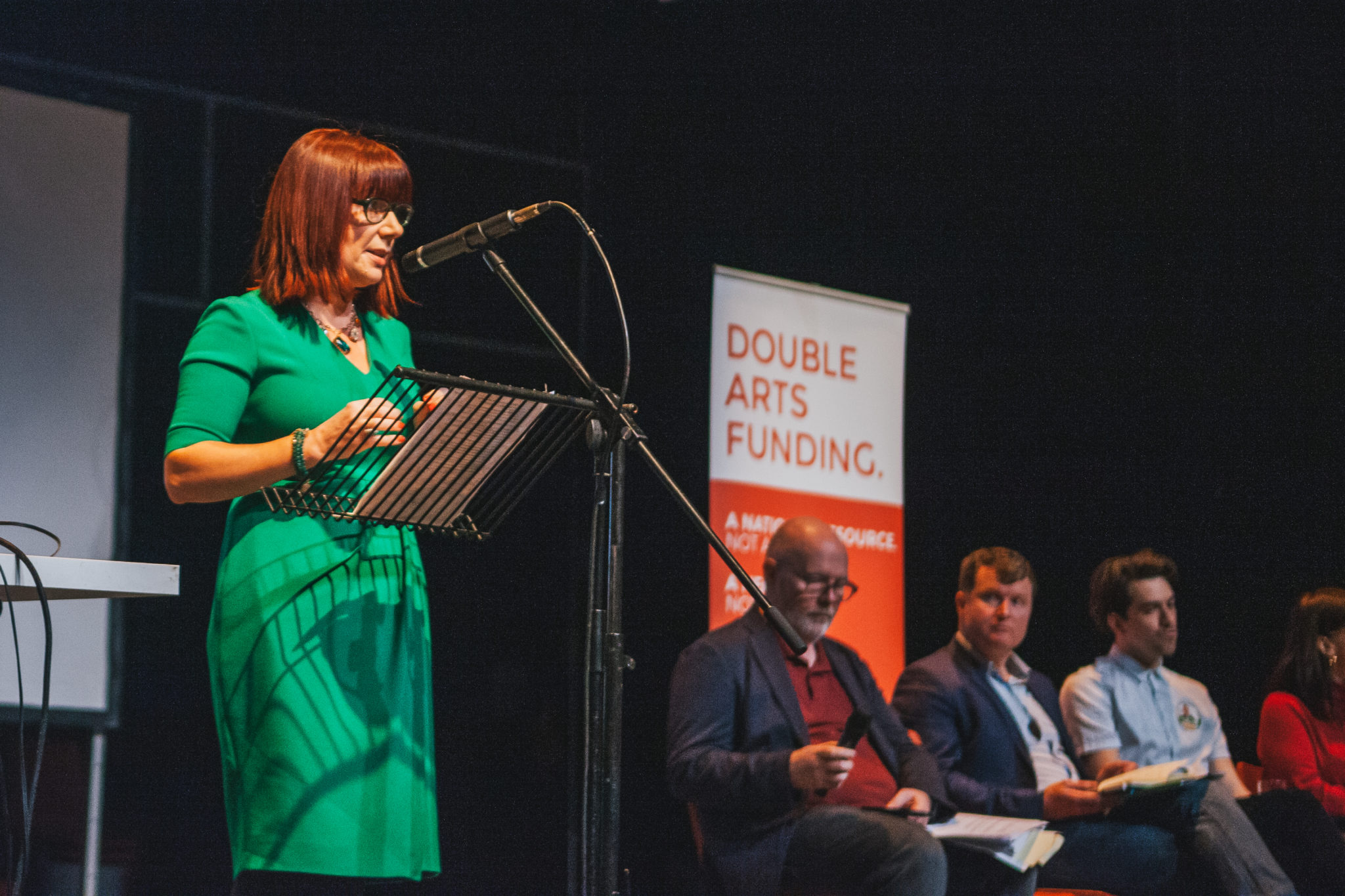 The NCFA (National Campaign for the Arts) invited Election Candidates 01/31/20
The NCFA (National Campaign for the Arts) invited Election Candidates 01/31/20That assertion didn’t go down very well, with rumblings of dissatisfaction and anger among the artists in the audience occasionally erupting into audible jeers. Some recalled how they had been “embarrassed” standing in the dole office. Indeed, the ‘artists dole’ has come under fire from numerous musicians, who argue that the requirements and conditions are overly restrictive – particularly the fact that, to qualify, 50% of your income must come from your art.
Speaking to Hot Press after the debate, Malcolm Byrne pledged that Fianna Fáil would make the scheme more accessible.
Advertisement
“The idea of just a dole payment doesn’t go far enough,” he continued. “It’s more than just about Jobseekers Allowance, it’s about how we can ensure that emerging artists, and indeed even some established artists, have enough to live – and equally, how we can ensure they have enough to be able to create new art.”
Fintan Warfield stressed that the “inability to earn a living” was one of the most critical issues facing artists, and proposed the immediate introduction of a €4 million fund to roll out a living wage initiative through local authorities.
“If you launched a living wage initiative for artists, worth €30,000 taxable income, straight away €3,000 or €4,000 of that would go back to the state in tax,” he told Hot Press. “Lots of people would be taken off the social welfare, which is €10,000 to €15,000 a year. You’re allowing people to create their work, and, most importantly, you’re addressing the amount of time they spend working on their art that goes unrewarded. We need to reexamine models of funding, and the Arts Council needs to present proposals. Social welfare shouldn’t be the only route.”
Rebecca Moynihan took a similar stance. “Things like abolishing zero-hour contracts and the Low Pay Commission were Labour initiatives that Fine Gael are taking credit for,” she said. “We do need to look at social welfare entitlements – especially the labour activation measures. They can be very stressful for a lot of artists who are finding other outside work.”
Claire Byrne also suggested expanding the Minister’s social welfare scheme for artists, and committed to examining “the possibility of guaranteed basic income for up to four years within a ten-year period, to allow artists to pursue their careers with dignity.”
Richard Boyd Barrett emphasised how precarious an artist’s life can be. In Solidarity-PBP, he said, “ We want to see all artists given a living income. They shouldn’t be hounded to be looking for work when they have periods when they’re not working.
“We also want to see a public works programme established,” he continued. “Starting off, we would have at least 5,000 artists directly employed by the State, where they would get a decent living income when they’re not working, by using their creative talents in areas like mental health, education and community and youth services, in order to bring the arts deep into the grassroots of our society.”
Advertisement
Sarah Durcan also noted that housing, healthcare, education and transport policies would play a role in bringing security to the lives of artists, and stressed the importance of “expanding tax breaks for lower income artists and ensuring that Intreo has an understanding of irregular and freelance work.”
Give Us The Night
In addition to calls for long-term cultural infrastructure, and the development of affordable and accessible spaces for artists, several of the candidates addressed the issues at the heart of the Give Us The Night campaign – championed over the years by Hot Press.
Josepha Madigan reiterated Fine Gael’s proposal to establish ‘night mayors’ in Irish towns and cities, to deliver positive changes to the country’s nightlife.
Claire Byrne – who worked in the past for POD Concerts – also supported funding for night mayors. She stressed that we need to review the licensing laws and the related costs – noting that “there’s nowhere to dance in this city anymore.”
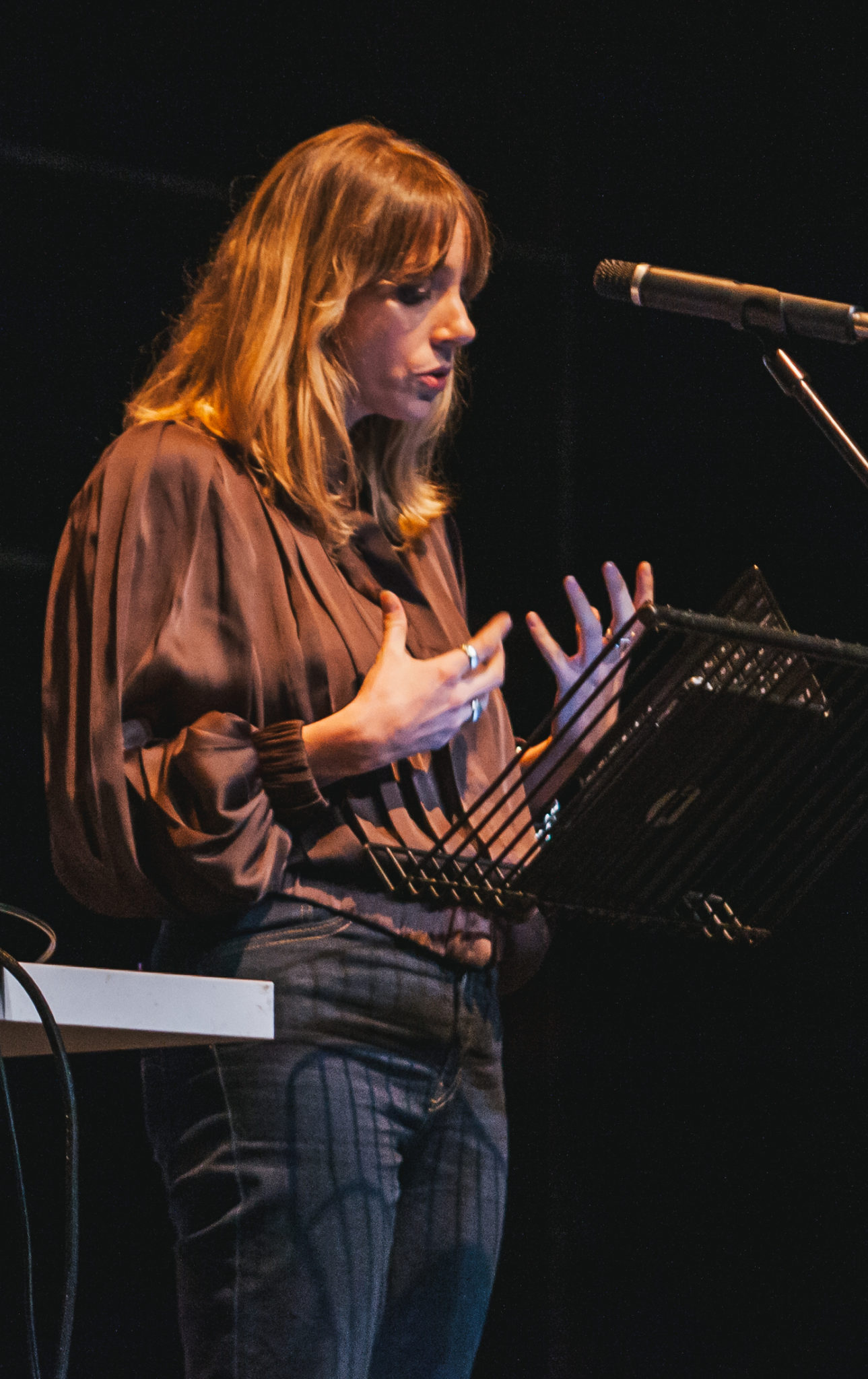 The NCFA (National Campaign for the Arts) invited Election Candidates 01/31/20
The NCFA (National Campaign for the Arts) invited Election Candidates 01/31/20Advertisement
Reforming nightlife is among Sinn Féin’s key priorities for the arts, Fintan Warfield remarked. Speaking to Hot Press after the hustings, he also expressed his continued support for the testing of drugs at music festivals and clubs.
“Summers pass, and every year we hear about another death at a festival,” he told us. “We need to make this happen, and people like the Ana Liffey Drug Project are calling for it. Going down and distributing information and engaging in a conversation is really important, but it needs to be more than that. There needs to be amnesty bins. People need to have their drugs tested, to avoid these deaths. It’s common sense.”
Richard Boyd Barrett expressed a similar sentiment in conversation with Hot Press. “Without a doubt,” he would support the testing of drugs, and suggested that funding for the policy could go through the health budget.
There were also calls from some candidates to expand Ireland’s Section 481 tax incentive for film and television production. “It makes a lot of sense to extend Section 481 to theatre production, music production and gaming,” Fianna Fáil’s Matthew Byrne said, while Claire Byrne argued for extending the incentive “in terms of music rights for musicians as well.”
Fintan Warfield also expressed his support for more Irish music on Irish radio – including a specific quota for Irish-language music.
“I have a piece of legislation that would require radio stations to play 5% of their music through the Irish language,” he told us. “It’s a very small percentage, but it would mean royalties, and it would encourage artists. The general comparison we use is France, which has this in place. It’s huge for French music and French-language music. So we need to look at that for the Irish language, because it also has so many benefits for the language.”
With promises, commitments, lofty figures and accusations of “auction politics” all doing the rounds, it remains to be seen whether these well-meaning manifestos will translate into a strong programme for government, in which the arts will be treated as a valuable asset. What is certain, however, is that the frustration among the artists and creatives present was palpable – and will likely reach breaking point, if the next government once again fails to support Ireland’s invaluable arts community.
Advertisement
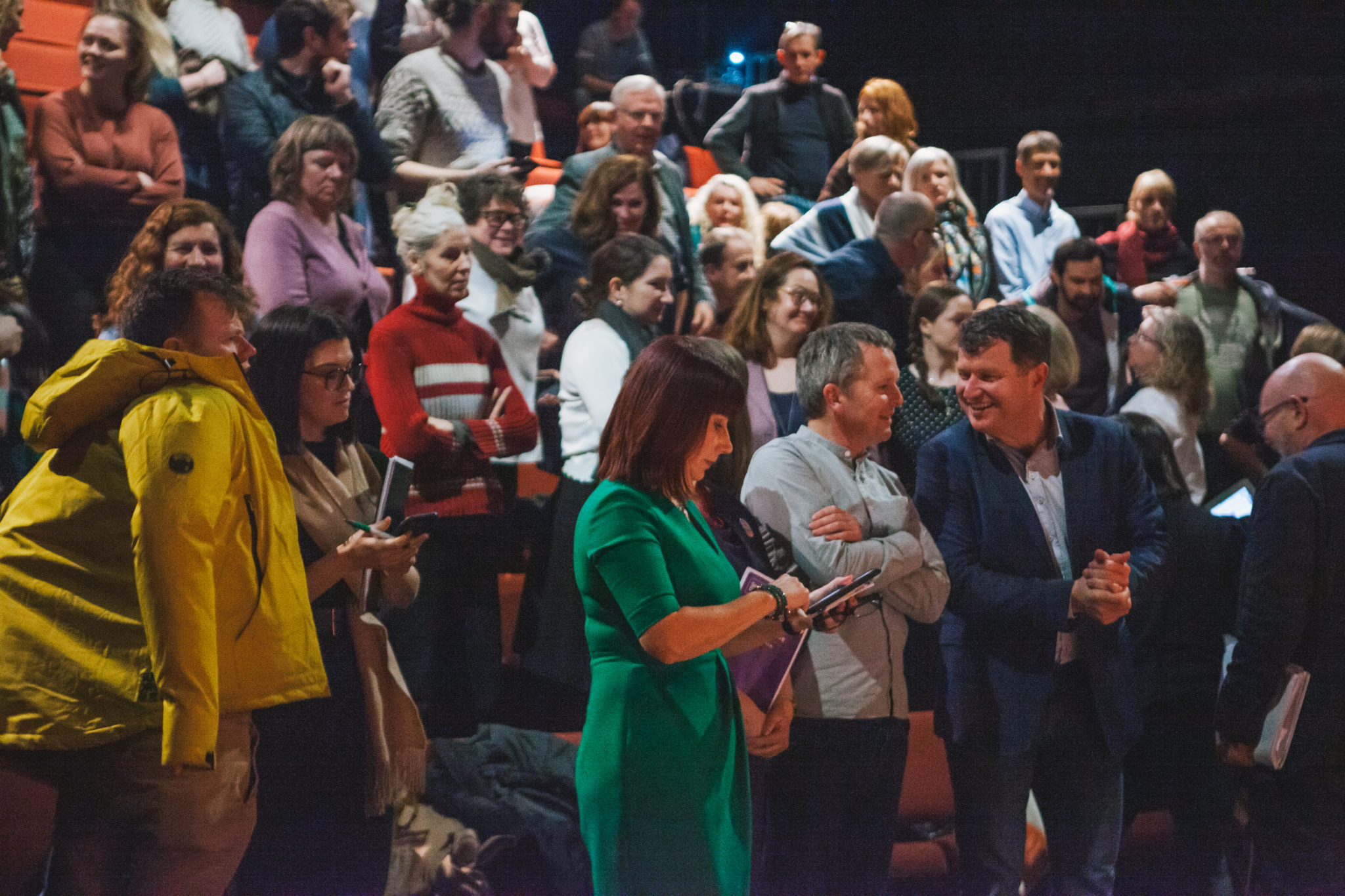 The NCFA (National Campaign for the Arts) invited Election Candidates 01/31/20
The NCFA (National Campaign for the Arts) invited Election Candidates 01/31/20Event Photography: Ava Holtzman










